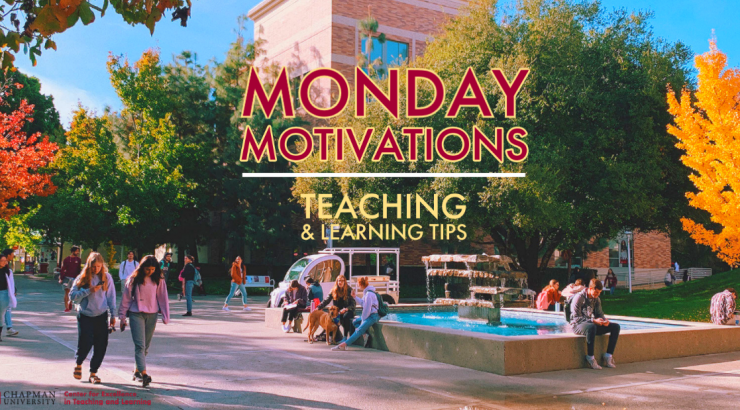
Tips for the Week of February 20, 2023
February 16, 2023
Priming Students for Success
Students come to us with a wealth of preexisting knowledge, skills, beliefs, and attitudes, which influence how they attend to, interpret, and organize new information. How they process information will, in turn, influence how they recall, think, apply, and create new knowledge. Having a sense of what students know and can do when they begin a new topic of study can help us design instructional activities that build on student strengths, and more importantly, acknowledge and address insufficient prior knowledge and misconceptions. Click here for some ways you can assess your students’ prior knowledge and “prime” them for success.
Who is Active in the Classroom?
A great deal of empirical evidence suggests that student satisfaction and performance improve with a more active learning approach, where the educator takes on the role of facilitator (Baepler, et al., 2016; Patton, 2015). Active learning (AL) has been defined as any instructional method other than lecture that engages students in learning (Prince, 2005). Some AL activities take only 2-3 minutes (e.g., think-pair-share), while others may require much more time (e.g., Jigsaw). Allocate enough time for the activity, and make sure to leave time to debrief and identify the takeaways at the end of the activity. For a short list of proven strategies see Getting Started with Active Learning Techniques.
Cognitive Load and Content Chunking
In the same way that having too many windows open on your computer reduces its capability to work properly, Cognitive load theory tells us that overloading students’ short-term memory reduces teaching effectiveness. Designing instructional materials to reduce this load aids in moving information from students’ working memory to long-term memory storage (Loveless, 2022). One way to avoid cognitive overload is by chunking content into small, related bits that can be more easily absorbed by students as they learn new information. We encourage you to learn more about out how chunking can be used to improve retention, and try these four tips for chunking your own course content.


